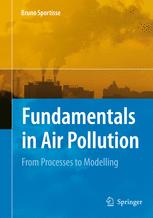

Most ebook files are in PDF format, so you can easily read them using various software such as Foxit Reader or directly on the Google Chrome browser.
Some ebook files are released by publishers in other formats such as .awz, .mobi, .epub, .fb2, etc. You may need to install specific software to read these formats on mobile/PC, such as Calibre.
Please read the tutorial at this link: https://ebookbell.com/faq
We offer FREE conversion to the popular formats you request; however, this may take some time. Therefore, right after payment, please email us, and we will try to provide the service as quickly as possible.
For some exceptional file formats or broken links (if any), please refrain from opening any disputes. Instead, email us first, and we will try to assist within a maximum of 6 hours.
EbookBell Team

4.3
88 reviewsThis text is intended to be used in a lecture course for college students in air quality, with a focus on modelling challenges. The key current issues are discussed within six chapters: basic principles and classification of air pollution, radiative transfer, atmospheric boundary layer, gas-phase chemistry, aerosols and multiphase processes, and chemistry transport models and numerical simulation, respectively.
The book starts with the basic principles of physics, chemistry and fluid mechanics, and is written in an understandable way for students. Through simple exercises and realistic problems (the answers are included) the state-of-the-science prevailing issues is investigated.
Audience
This book is intended for students in environmental science, meteorology, in the fields of climatic change and air pollution, geophysics and engineering. It may also be a good survey book for researchers active in the field.
- Concise and comprehensive overview of air quality
- Includes exercises and problem sets with detailed solutions